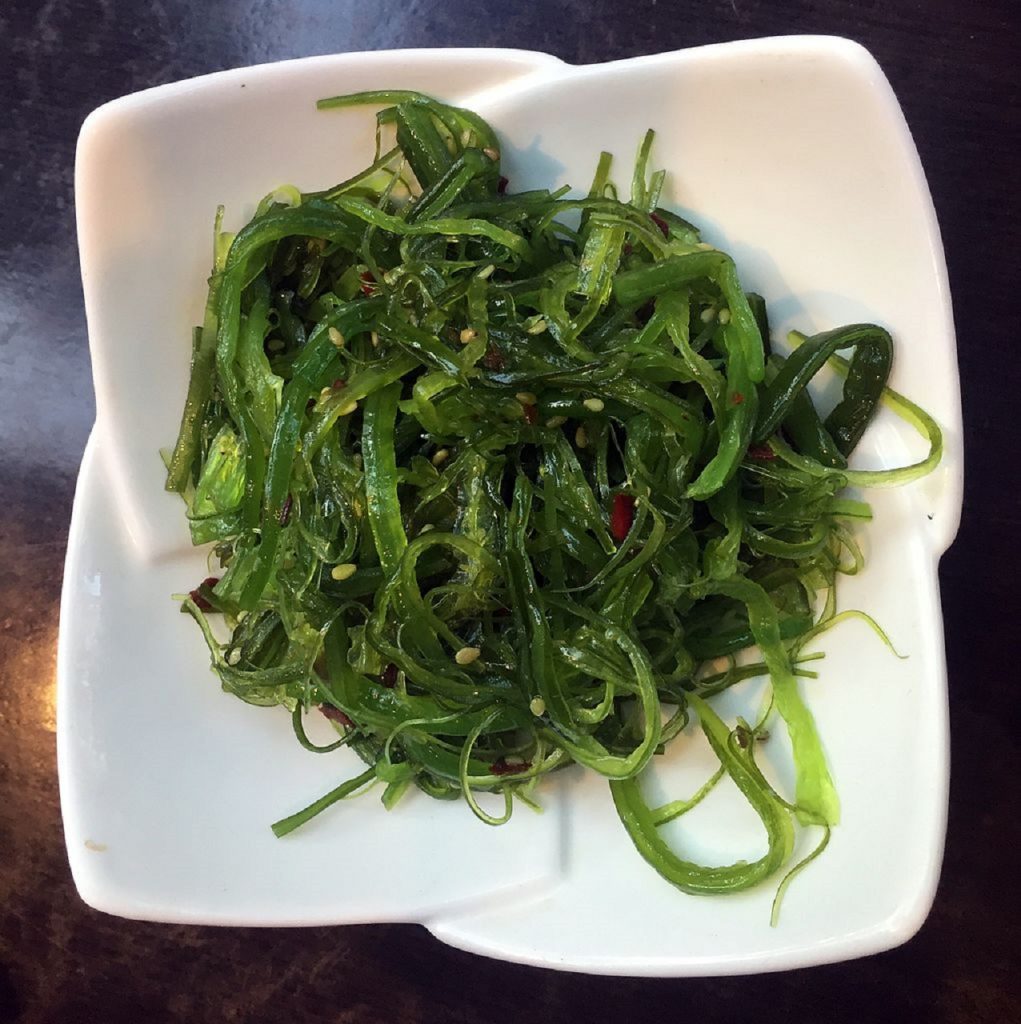[Article updated on 19/09/2023]
This page lists detailed information sheets for fruits and vegetables starting with W, X, Y and Z, it was a bit difficult to deal with them separately. Each type of fruit and vegetable is described in detail with useful information also for consuming the vegetable. It is also explained how to cook it. In addition, the nutritional values, calories and properties that distinguish it are indicated for each type of fruit and vegetable.
#1 Wakame
The wakame (Undaria pinnatifida) is an edible algae which, with kelp (Laminaria japonica) represents a food resource of primary importance for the global economy, particularly for the countries of East and Southeast Asia. Among the different species of brown algae used for direct and indirect food purposes, wakame represents the richest source of protein. It has an average content of 16.3 grams per hectogram of product.

The amino acid profile and protein quality indices are also good: wakame contains all the essential amino acids. Wakamé algae contains iodine and selenium, two minerals very important for the balance of the thyroid gland and for maintaining metabolism. The vitamins and mineral complex contained in wakame seaweed are a panacea even for people suffering from nutritional deficiencies.
#2 Wasabi
Wasabi is a plant of Japanese origin belonging to the same botanical family as radish, horseradish, arugula and cabbage. The roots of this prized and very ancient plant are difficult to find and expensive, because they grow quite slowly. From the root of this plant, we obtain a green paste with a particularly spicy taste and a fairly dense consistency, well known to those who have tasted Japanese cuisine at least once. It is, in fact, generally used as an accompaniment to typical dishes of the oriental tradition, such as sushi, sashimi, tempura. This vegetable can boast of antiseptic and antioxidant properties, as well as a high concentration of vitamin C. In addition, this root can be considered a natural antimicrobial agent.
#3 Ximenia
Ximenia is the fruit of Ximenia americana. The ripe pulp of this fruit native to West Africa contains 65% water, 6% proteins, 23% lipids and 11% soluble sugar. It has bioactive and antioxidant activities. One hundred grams of pulp contains 188 mg of vitamin C, 0.9 mg of carotenoids, 2.8 mg of anthocyanin and 38.3 mg of flavonoids. The fruit is particularly appreciated in rural areas during the period of food scarcity, which corresponds to the fruiting period of the species. The oil extracted from the seeds of X. americana is used locally for food, medicine and cosmetics.
#4 Yacon
Yacon is a vegetable native to the Andes mountain range, between Argentina and Colombia. It is the root of Smallanthus sonchifolius. It is also known as jiquimilla. With a crunchy and thirst-quenching consistency, it is cultivated according to ancient methods, in rotation with other tubers. It tastes similar to pear, but has a carrot shape and brownish skin. The more the root matures, the milder its flavor will be. Composed almost entirely of water and oligosaccharides (typically fructose), it is a low-calorie food but which has the same properties as prebiotics. The amount of fiber and protein it contains is ideal for the intestine. But it also has beneficial effects on the immune system and cholesterol, given its anti-inflammatory action.
#5 Yin Tsoi
Yin Tsoï or Chinese spinach is a vegetable mainly consumed in China and Asia. It can be green with crimson highlights. The flavor is very similar to standard spinach varieties. Like most green leafy vegetables, the younger leaves of Yin Tsoi are preferred for raw consumption, while the larger, older leaves are usually steamed or stir-fried.
This variety of spinach is rich in nitrates, potassium and oxalic acids. Specialists therefore recommend not consuming large quantities if you suffer from kidney disease. Yin Tsoi are highly concentrated in iron, copper, carbohydrates, calcium, folic acid, vitamin A, B6 and vitamin C. Chinese spinach is a source of complete protein, containing a complete set of amino acids. To cook, gently boil the leaves in water or steam them. It is an ideal choice for salads, soups, stews, curries and fries.
#6 Yuzu
Yuzu is a citrus fruit that belongs to the Rutaceae family and the Citrus genus. Its scientific name is Citrus reticulata var. austere. It is a fruit similar to lemon but smaller and richer in seeds. Yuzu can vary in size from a large tangerine to a small grapefruit. Yuzu is rich in vitamin C, polyphenols and antioxidants. It is particularly beneficial in cold weather because it strengthens the immune system and is a valuable aid against colds.

#7 Zaban
Zaban is the fruit of Saba senegalensis, a climbing plant belonging to the botanical family Apocynaceae. The fruit of Saba senegalensis is a pod with hard yellow skin. The latter contains large seeds embedded in a yellowish pulp, having a pleasant acidity similar to that of tamarind. The flavor has also been compared to that of a mango or lemon. Zaban is rich in vitamin B6, niacin, riboflavin, thiamine and vitamin C. The fruit is also used in the preparation of remedies against female sterility.
#8 Zatte
Zatte, fruit ofAnnona squamosa, is a fruit native to tropical regions of Asia and America. A study published in Nature highlighted its antioxidant, antimicrobial and anticancer properties. The fruit contains several vitamins, minerals and clinically active substances, including:
- potassium;
- iron ;
- calcium;
- copper ;
- magnesium;
- phosphorus;
- zinc;
- flavonoids;
- triterpenes;
- tannins;
- phenolic compounds.
Zatte is rich in energy. It is an excellent source of vitamin C and manganese. It is also a good source of thiamine and vitamin B6. It also provides vitamin B2, B3, B5, B9, iron, magnesium, phosphorus and potassium in good quantities.
